10 things to know for best Annapurna circuit trek
The Annapurna Circuit Trek is an iconic trekking route in Nepal that takes you through diverse landscapes and culture, offering stunning views of the snow peaks of Annapurna massif.
However there are several detours, alternative routes and side hikes to get the best out of the trek. With the extension of the dirt road, Annapurna circuit trek could be done in as little as 8 days.
In this article I will talk about where to start and end your trek for a best short trek. You can also spend three good weeks of trekking in Annapurna.
Also know the difficulty and cautions, so you can prepare well.
Here are 10 things to know for the best out of Annapurna Circuit Trek :
-
How difficult the trek ?
Annapurna circuit trek is a challenging trek suitable only for fit and experienced trekkers. The trek requires 6 hours of walking each day for about two weeks that involves ups and downs of up to 500 m each. The trail in the higher reaches goes over the rockery, scree and snow fields. Temperature may fluctuate between 30 to - 15 degree Centigrade. Weather may also change with potential rain and snow throughout the year. This trekking definitely needs sound fitness with strong determination and perseverance.
Good news is that with careful preparation ahead of time, this trek becomes one of the few treks in the Himalayas offering enough of challenges for many.

-
Choose the best itinerary
The road has been extended along both the Marshyangdi and Kali Gandaki valleys leaving only a few days of trekking off the road. However, only a few numbers of vehicles, alternate routes and the unregistable scenery are worth the 12 days trek. It has also been popular among trekkers to combine the Annapurna circuit trek with Annapurna base camp by driving down the Kali Gandaki valley. This requires about three weeks.
Here are some of the updated itineraries for Annapurna circuit trek :
Short Annapurna Circuit Trek :
Annapurna circuit trek could be done in as less as 8 days using the newly available dirt roads. Taking a ride further into the Marshyangdi valley and driving back to Pokhara after crossing the Thorong La pass allows trekkers to escape the trekking days in the foothills. The 8 days itinerary follows the standard itinerary with rest day for acclimatization in the alpine zone.
Classic round Annapurna trek :
If you have time, Besisahar or Bhulbhule is still an ideal place to start the Annapurna Circuit trek. There are regular means of transportations that leave from Kathmandu everyday. Walking from the Himalayan foothills give you more trekking days and also allows you to acclimatize well and get into a good trekking rhythm.
Annapurna Circuit trek with Ghorepani and Annapurna base camp
The trek could be customized with trek to Ghorepani, Upper Mustang and Annapurna Base camp as well.
-
Alternative routes and detours
There are several alternative routes and detours to take which avoids more touristy trails. Nar Phu valley is one such route opened only in 2003. Similarly, side trips to Milarepa cave, Gangapurna glacier, Ice Lake and Tilicho lake give deeper insight into the scenery and culture of Manang.
Nar Phu Valley Trek :
Hidden in the citadel of high Himalayas, Nar and Phu are the very remote and unspoiled valleys in Annapurna. While the trek gives utmost wilderness experience, it is equally rich in culture and scenery. Located between the classic trails of Annapurna circuit and Manaslu, the Nar Phu valleys are the hidden gems that exhibit medieval Tibetan Buddhist lifestyle and culture.

-
Weather risk in Annapurna Circuit Trek
The bad weather is the major risk in Annapurna circuit trek. The high altitude and trans-Himalayan windy valley funneling wind may cause snow blizzards. About 28 people died in the region in the snow blizzard of 2014 April. The heavy snowfall triggered by late monsoon in October of 2022 also killed four and caused hundreds to be evacuated. If the weather gets worse the stretch of walking at 5000 m becomes very difficult with snow filling the area and the high velocity chilly wind making it hard to see the trail.
However for many this just makes it more adventurous. With simple caution and preparedness, it is possible to avoid the risk of bad weather.
The best time to do the Annapurna circuit trek is in the months of September, November, March and May. Even though these months are considered shoulder seasons, they have normal predictable weather to cross the pass. As the weather pattern might change, get the weather update. Any kind of Tsunami in the Indian Ocean around the time of your travel may suddenly change the weather in the Himalayas. Avoid trekking in winter and rainy season.
Travel in a group. There are only a few lodges at the base of the Thorong La pass and pretty much all of the guests staying in a lodge will start together making all as one group. Follow the starting time and go as a group.
Postpone crossing the pass, the storm is imminent. If the storm comes midway, here are some actions to take.
Look if there are caves under rocks or overhang you can take shelter in.
If there are no shelters around, build one with stones, mattress or snow cave in a way to protect from the wind. Make fire or heat if you can. Otherwise make sure to keep your body dry and warm. Keep on doing some warm up exercise like moving arms, legs, fingers and toes vigorously to keep blood circulating. -
To where and what to ride ?
In the last few years, there have been extensive road construction in the Annapurna conservation area. However most of them are still unpaved dirt roads with only few vehicles plying. There are also detours and alternative routes to avoid the road. The awe-inspiring scenery and culture is worth the trekking despite the dirt road. Moreover the option of transportation has made it possible for trekkers to do several routes of Annapurna within limited time. So here is information about different sections trekkers can drive and type of transportation available.
Kathmandu to Besisahar and Bhulbhule:
There are local buses and microbuses available from Kathmandu to Besisahar or Bhulbhule. If you are planning to drive further, 4wd jeeps are available from Besisahar to Chame, the district capital of Manang.
If you are taking a private transportation from Kathmandu, drive till Shynage or Dharapani. This will avoid walking in the hot and humid valley basin.
Drive to Manang
For those short of time, it is also possible to drive to Manang from Kathmandu in a 4WD drive. It is about a 16 hours rough journey.
Muktinath to Pokhara
There are regular local buses between Muktinath to Pokhara. Many trekkers also drive from Muktinath to Tatopani and then trek up to Ghorepani or Annapurna base camp.

-
Dormitory to luxury lodges in Annapurna Circuit
Trekking in Nepal is popular as teahouse treks. For a long time, teahouses were known as simple commercial centers run by families to cater traders as well as local travellers. With the arrival of trekkers, teahouses were developed into lodges with private rooms, commode toilets and also started catering basic international cuisines.
Thanks to the Annapurna Conservation Area Project for training locals, regulating standards and hygiene and managing rubbish that the Annapurna area has now well established teahouses.
Nights before Thorong La pass
Teahouses become colder as we go higher from Manang. Rooms are made in a way to accommodate more than two people. You may have to share a dormitory, especially one night at high camp depending upon the time of the year.
Comfortable lodges on the Annapurna Circuit Trek
While teahouses are basic with just small private rooms with space enough for only two beds, many tea houses are now also developed into hotels with bigger rooms, proper comfy beds and ensuite bathrooms.
These hotels with bed heating and an ensuite bathroom may cost from USD 25 to a few hundred dollars. The more luxury resorts are available in the Mustang side after Thorong La pass. If you are planning to walk the second half of the trek, Lo Mustang Himalayan Resort, Kagbeni Palace, Larjung guesthouse are some of the luxurious boutique places blend in local culture and architecture.

-
Altitude sickness and Acclimatization:
It is essential to recognize the symptoms associated with altitude sickness, which may include headache, nausea, and dizziness. Should you encounter severe symptoms, it is imperative to descend without delay. Ensure that you consume a minimum of 3 liters of water daily. As a precautionary measure, a tablet of Diamox (Acetazolamide) at a dosage of 250 mg may be taken 24 hours prior to reaching high altitudes. -
Permits and Regulations
Trekkers need two different types of permits for the Annapurna circuit trek. The area is managed by Annapurna conservation area project (ACAP) and thus trekkers are obliged to get the conservation permit. The other permit trekkers need to get is TIMS (Trekking Information management system). Both permits could be acquired from Nepal tourism board in Kathmandu. These permits could also be obtained from Pokhara if you will be in Pokhara before the trek.
What you need for permits ?
- Trekkers need at least two copies of passport-sized photographs.
- The images should clearly depict your face to ensure proper identification in case of an emergency.
- Plan well and provide the accurate tour outline and the route, specifying both the entry and exit points of your trek. This helps to track your location in case of emergency.
- It is also necessary to provide a local emergency contact, preferably someone you know in Nepal, or the contact information of the guesthouse or hotel where you will be staying. Moreover, you must include the emergency contact details of a family member back home.
- A comprehensive breakdown of all fees associated with the Annapurna circuit trek in local currency is required as well.
- Travel insurance is recommended for such treks. Provide details of your travel insurance.
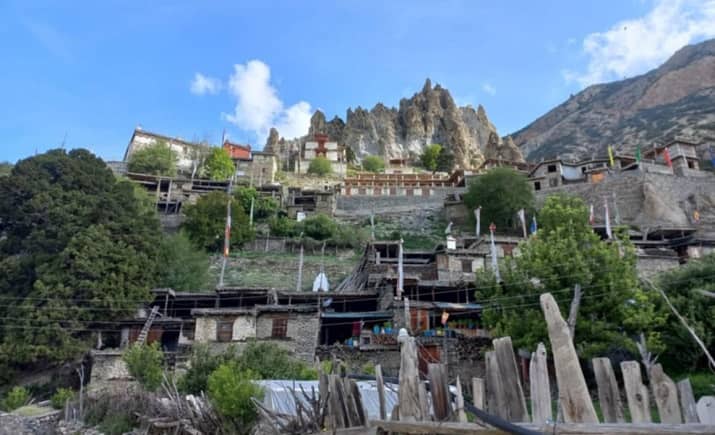
-
Cultural Experience:
The Annapurna Circuit Trek offers a rich cultural experience, allowing you to interact with diverse ethnic communities, including Gurungs, Manangis, Thakalis, and Mustangis, and experience their unique traditions and lifestyle. -
Emergency Facilities:
There are basic medical facilities and emergency evacuation options available along the trek, particularly in larger villages and at higher altitudes.Visit the HRA (Himalayan Rescue Association), the Manang Aid Post at Manang for updates and information before crossing the Thorong La Pass. A lecture hall in the HRA premises to provide a talk on Acute Mountain Sickness to the trekkers and trekking related staff. At present, this aid post treats about a thousand patients and saves several lives every year. About 70% to 80% of the patients are Nepali and the rest are western trekkers. The aid post is fully equipped to treat the high altitude sickness and also provides the other medical services to the trekkers and local communities.
Responsible Trekking :
Practicing responsible trekking, including proper waste disposal and respecting local customs and nature, is essential to preserve the beauty and integrity of the trekking region.
Before embarking on the Annapurna Circuit Trek, it's crucial to thoroughly research and plan, consider hiring a local guide, and be well-prepared for the challenges and rewards that come with this incredible trekking experience.
What our clents say

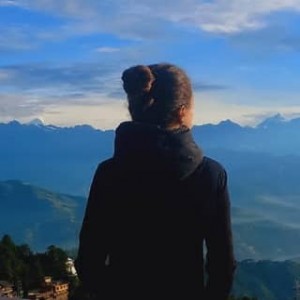
Kathmandu, 5 day's experience !
I came to Nepal from China for 5 days. I decided to stay in Kathmandu. As I am interested in religion, spirituality and nature, I decided to divide my stay…
Read More
Did it again !
After an incredible trek with them to the Langtang valley in March, they arranged another awe inspiring trek for us to the Manaslu circuit. Rabi created an itinerary that suited…
Read More
Did it again !
After an incredible trek with them to the Langtang valley in March, they arranged another awe inspiring trek for us to the Manaslu circuit. Rabi created an itinerary that suited…
Read More
Did it again !
After an incredible trek with them to the Langtang valley in March, they arranged another awe inspiring trek for us to the Manaslu circuit. Rabi created an itinerary that suited…
Read More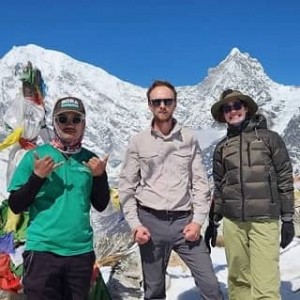
Brilliant Team fantastic trek
Rabi and Prabin provided a fantastic service at great value.
We spent 10 days with Prabin as our guide and we couldn't have been happier - he was professional, knowledgeable…
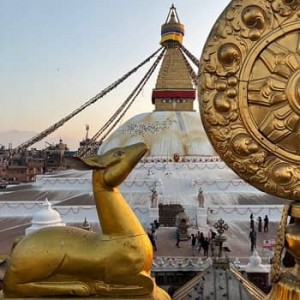
First time in Nepal but hopefully not my last !
Rabi arranged a number of one day short treks for me and a two day tour of Kathmandu. These were either led by Rabi or Prabin. Both are excellent, experienced…
Read More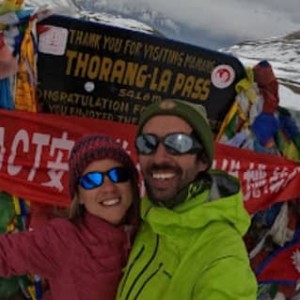
Great Adventure | Professional service
Last month we had the greatest experience of being amazed by the Annapurna circuit. We took the tour w Rabi and his hospitality was outstanding. He organised for us the…
Read More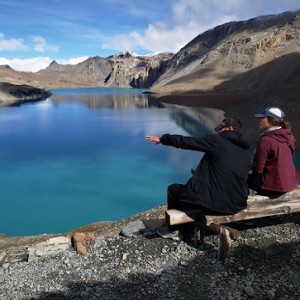
An unforgetable Adventure
My partner and I did a customized 15-day itinerary of the Annapurna Circuit with iTour Nepal and it was one of the best trips of our lives! Rabi was extremely…
Read More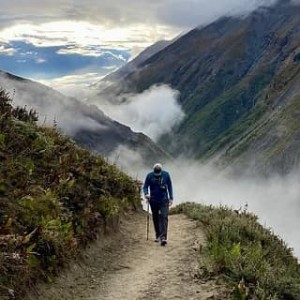
An unforgetable Adventure
My partner and I did a customized 15-day itinerary of the Annapurna Circuit with iTour Nepal and it was one of the best trips of our lives! Rabi was extremely…
Read More
A great Service !
Rabi led our 7 day tour from Kathmandu to Pokhara to Chitwan National Park and back to Kathmandu. He was very responsive during our booking process, super helpful in setting…
Read More
I will be back !
amazing view..good leader, good organizer..recommended executor of the Annapurna Basecamp tour....I will be back on a trip to Nepal by using i tour Nepal again
Read More
Excellent!
It is my second experience with iTourNepal and, as last year, it was EXCELLENT!
iTourNepal is truly an eco and socially responsible tour company focusing on sustainability.
The team is…
Read More
Nepal Bhutan 15 days Tour
Rabi is a fantastic organiser. We had several moving dates during planning, including a major mid-tour reshuffle to include a helicopter trip to Everest Base Camp. We didn't miss anything.
…

Excellent tour of Annapurna base camp
I went for a week-long trek on the Annapurna Conservation area with iTourNepal in April 2022. Great experience, somptuous landscapes.
I am very satisfied with iTourNepal. Ravi was great…

Great Tour in Upper Mustang
This trip in Upper Mustang was wonderful, Rabin is very friendly and attentive. We loved the places we stayed, especially in Lo Mantang. Accommodation was nice everywhere, Rabin and the…
Read More
Outstanding Motorbike Trip to Mustang
Great experience with itournepal, from early stages to completion. We went for a 2 weeks motorbike tour in Mustang, starting from Kathmandu. Rabi managed succes...
Read More
We will be back !
The tour, guides, and porters exceeded all of my expectations. They planned and adjusted our tour to our needs throughout the trek. They were experienced, positive, knowledgeable and so much…
Read More
Namaste Rabi !
Thank you so much for an amazing adventure. You and your team made this an unforgettable experiences. I survived the Annapurna trek thanks to your support and patient. Can't wait…
Read More
A great trekking Operator in Nepal
We were stopping in Nepal for 3 weeks, and we ended up organising all our tours through them.
Rabi & Shiva were absolutely great at organising our tours and…

Wonderful group of people !
We found Anna Nepal Trek on the internet and worked with them to plan several different tours in Nepal. Rabi helped us to plan a trip to see Chitwan and…
Read More
Beautiful and safe experience !
Rabi and Kopila were our Airbnb hosts and were so accommodating. We ended up selecting Anna Nepal Trek due to how great they both are, and Rabi's years of experience…
Read More